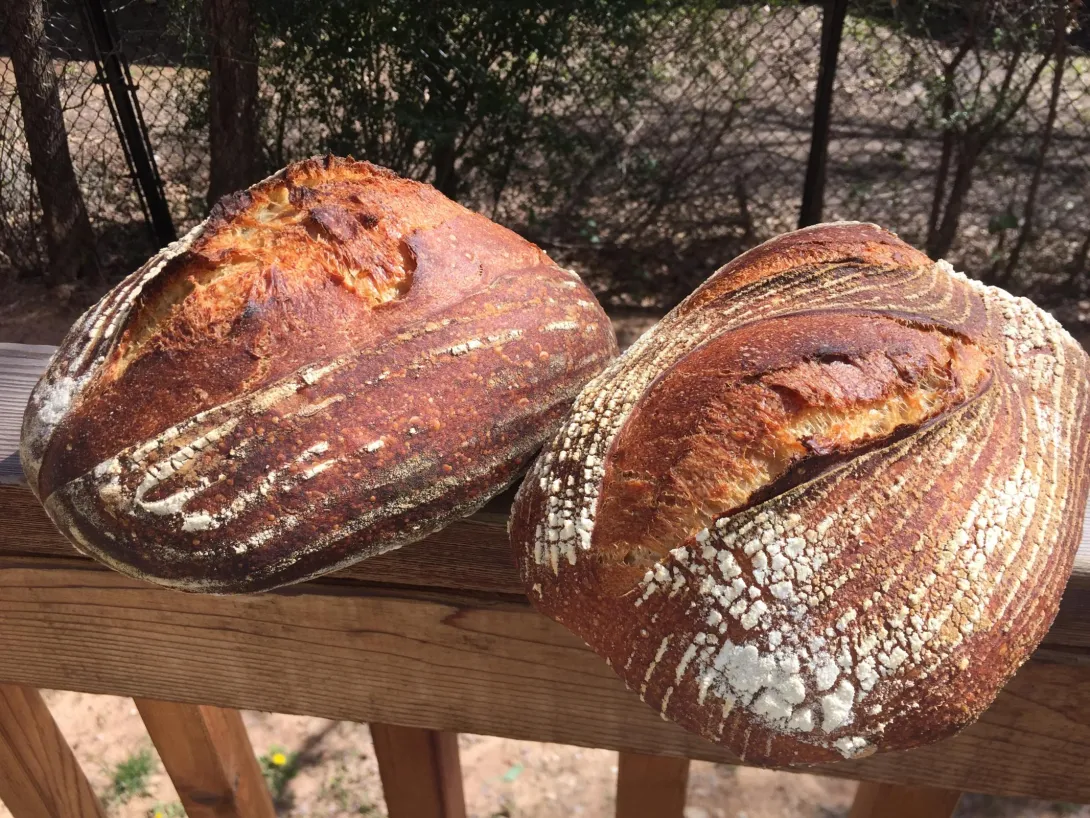
Long post incoming! After getting feedback on this forum about King Arthur's AP flour (Sir Galahad) being good for artisan bread, I decided to give it a shot. I had a real problem developing gluten this time!
Here's the formula I used for it:
600g AP flour
200g Bread flour
75g white whole wheat flour
656g water
240g levain
18g salt
It seemed to be developing pretty nicely in the bulk fermentation stage but when I tried to shape it, I REALLY ran into issues. The gluten sheath seemed to be tearing, it wouldn't hold together, etc. Finally I got it as good as I could and refrigerated the baskets overnight.
I didn't get nearly as much oven spring as I'm used to (presumably because the lack of gluten development).
Also I tried a new oven setup. I'm using a cast iron pan filled with lava rocks on the bottom shelf as my steam generator. This seemed to work very well (I think even better than the rolled up towel I'd been using before).
I also added on the very top shelf a layer of unglazed quarry tiles. The idea was to add to the thermal mass of the oven while also producing some more heat coming from the top to help bake the bread.
This had an interesting effect. The bread seemed to brown much more slowly than usual - but also far more evenly (as far as I could tell). I'll continue testing this out, but so far I like what I'm seeing.
I ended up baking it at 500 for 20 minutes with steam and an additional 35 minutes at 450.
So, what do you think about the AP/Bread flour thing? I'm pretty bummed with my results here. Is it just way too much hydration for AP flour? I used far less than the 86% recommended by theperfectloaf (around 75%). Should I just the dial the water back and deal with that KA's AP flour can't absorb as much water? Or maybe try upping the percentage of bread flour?
Lastly, the bottoms of these loaves are WAY more burnt than any of my loaves have ever been and I don't know why. It's a little worrisome actually. I'll continue to keep my eyes open for reasons why this would be.
However, it tastes great! Maybe my best tasting loaf yet : )
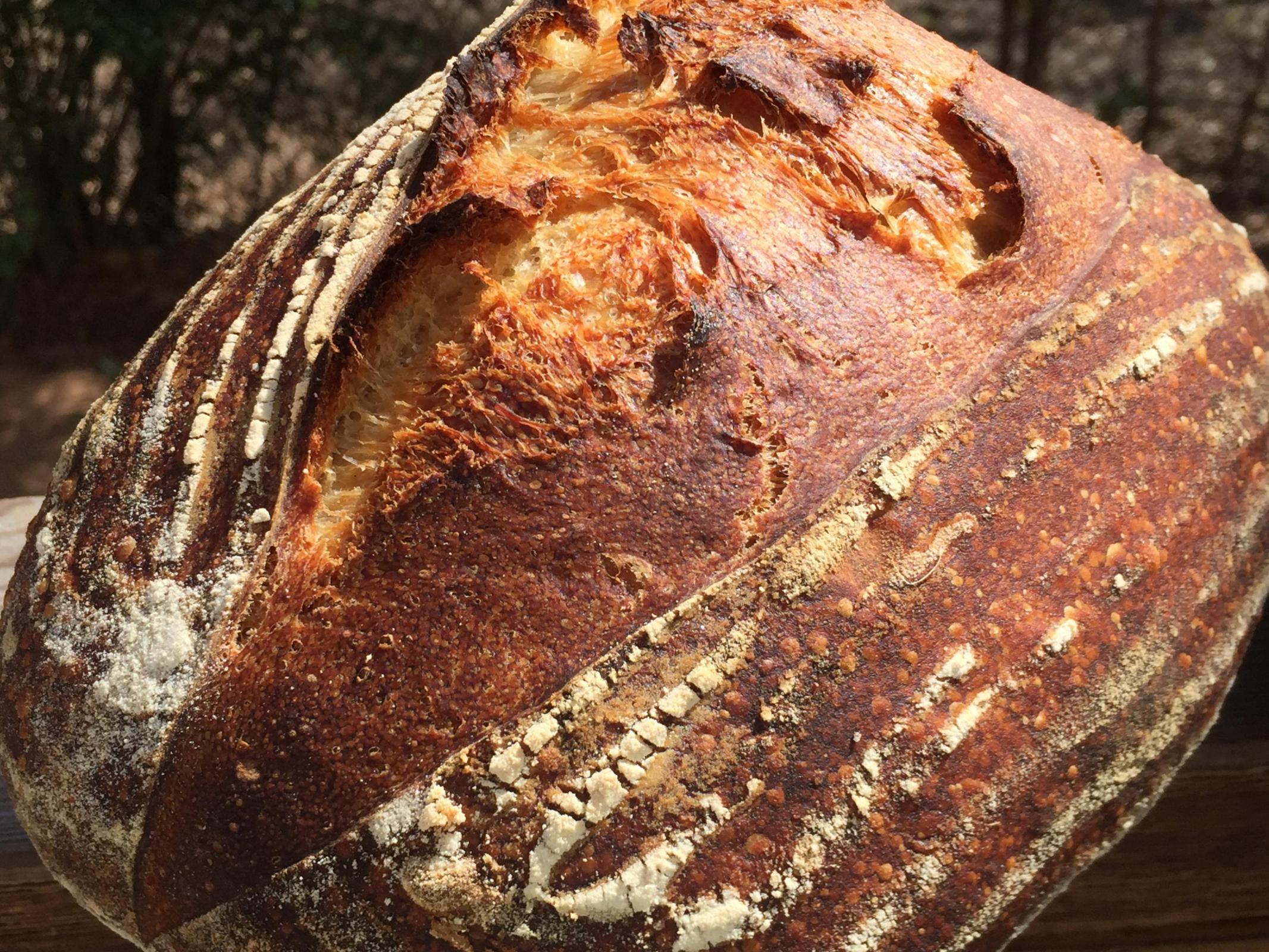
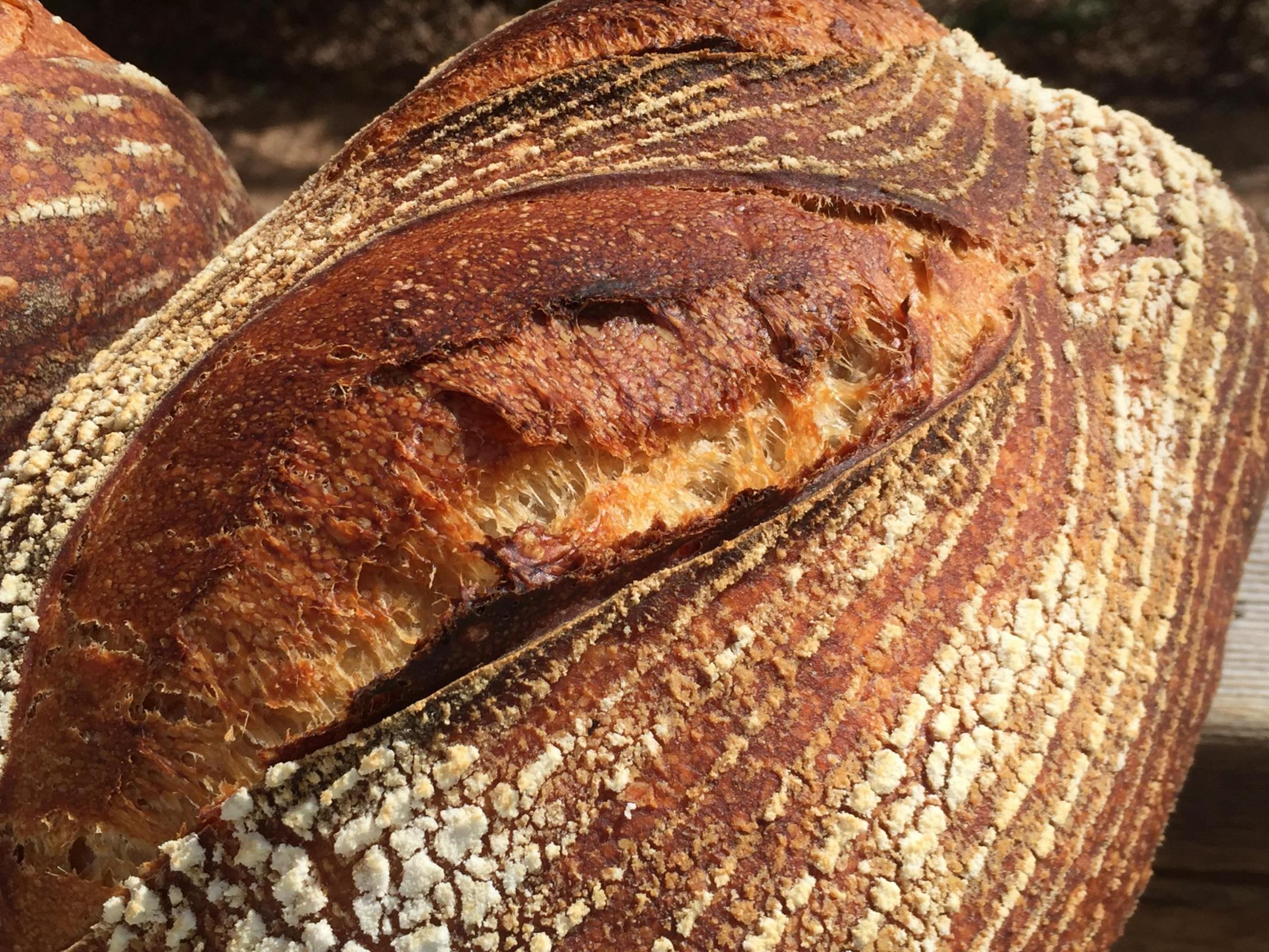
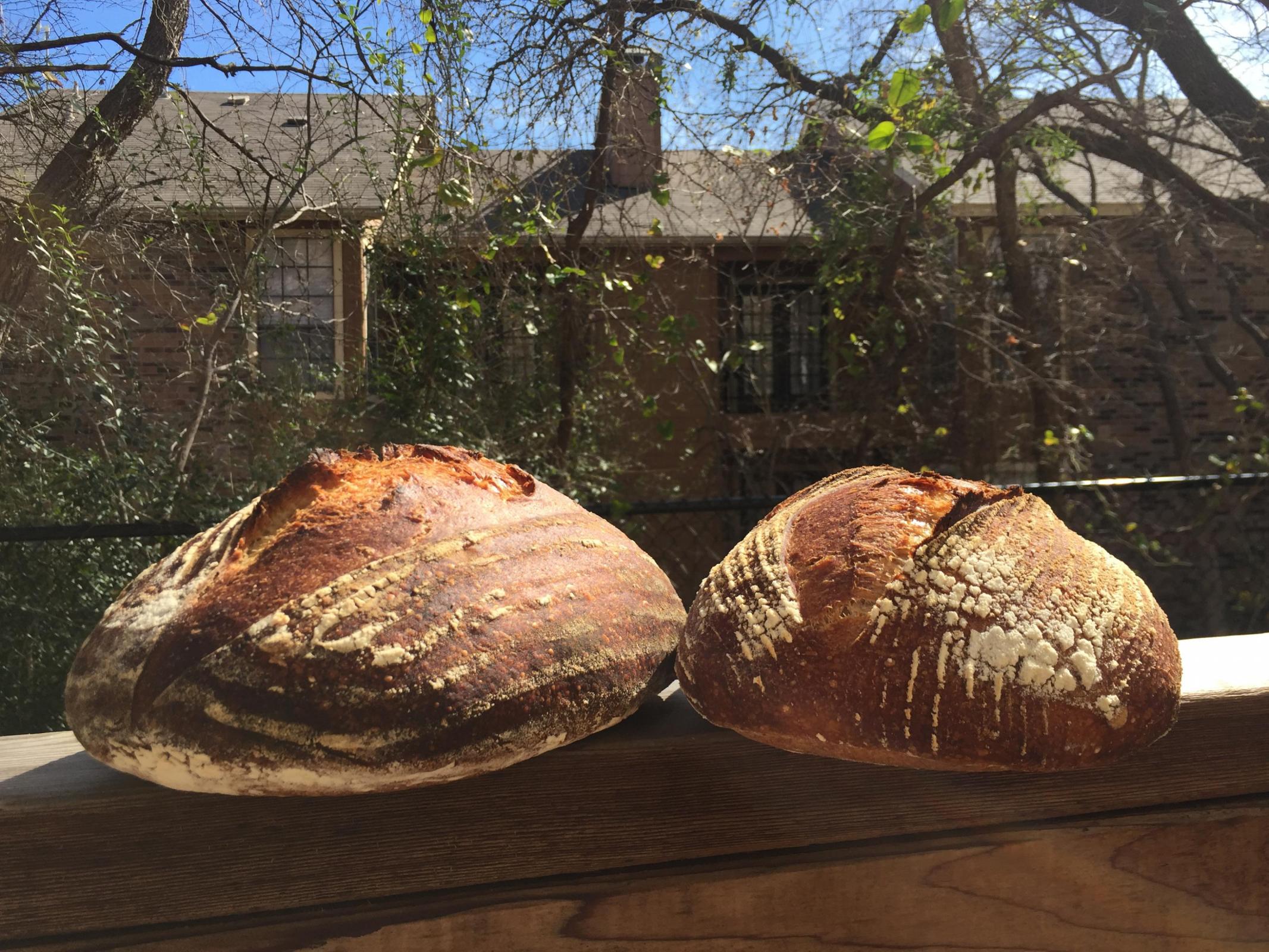
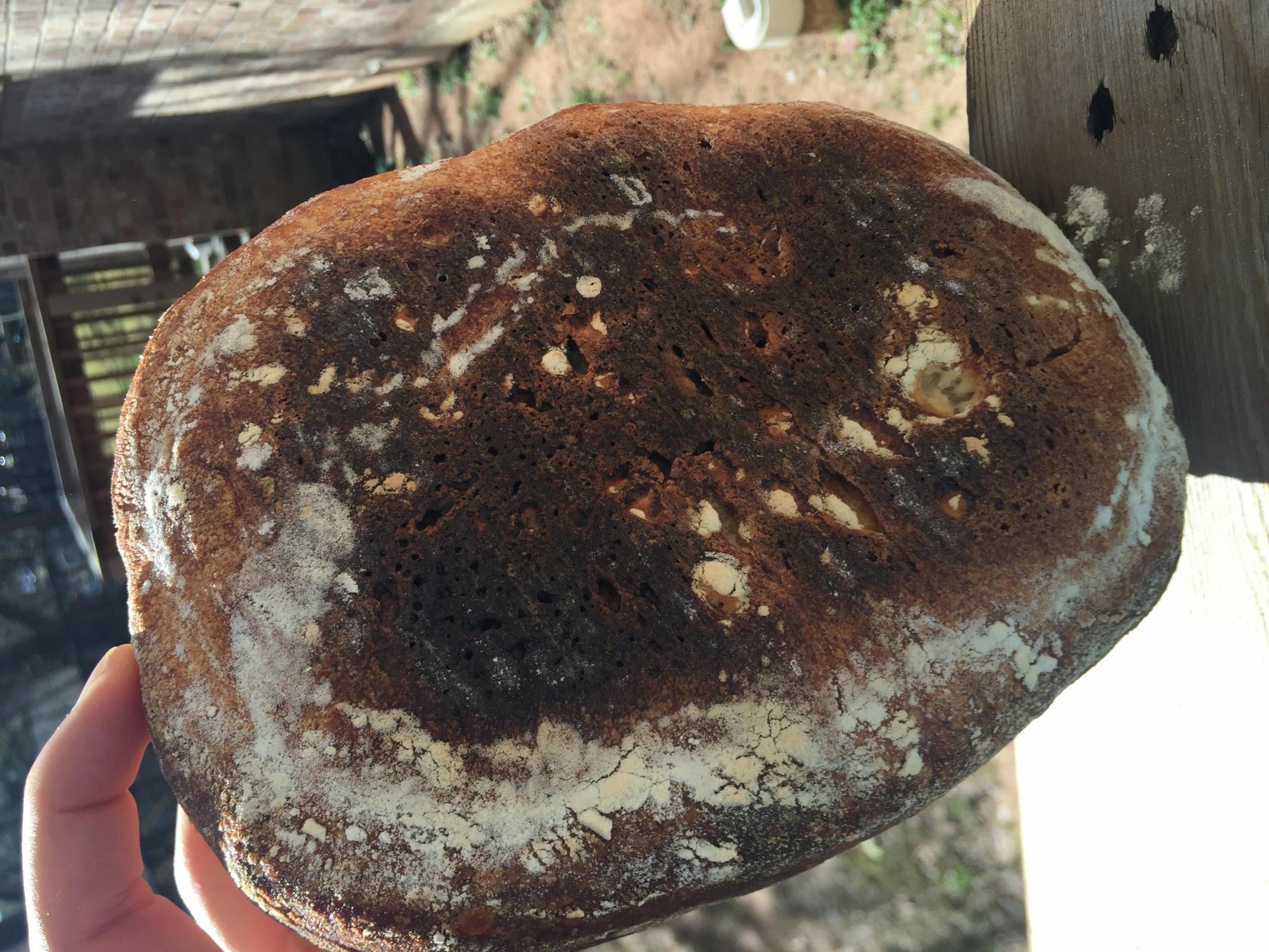

Unless I missed something (which happens), tell us more about the mixing,fermentation times and proof times. It sounds like there was a cold retard overnight (how long?) after shaping. 2 things you said make me suspicious that the dough was overfermented- tearing, fragile dough and that it took longer to brown. However, more info is needed. A crumb shot is sometimes telling, also.
I wonder if putting the bottom rack up one slot would help with the bottom browning. The frying pan can add to the heat on that side of the oven.
They look pretty good to me but I may have to try a slice before I'm sure. :)
The levain rose for a little over 6 hours in a warm oven (around 80+ degrees).
Then I mixed in the flour and the water (less 50g). Let it sit for half an hour. Added salt and the leftover water. Did 6 turns over 4 hours (all the turns during the first 2 hours).
Divided and preshaped. Waited 20 minutes, shaped. Went in the fridge.
14 hours later they got baked.
After all it is for eating. They look quite nice.
Looks absolutely count.
A silver aluminum air-bake baking sheet upon which sits a small baking stone, tile square, etc. They need only be big enough for your loaf to sit on.
The shiny silver reflects heat. The stone/tile acts as an insulator. Dust the stone/tile with corn meal to prevent sticking.
I'm at 5900 feet altitude and if I baked a loaf at those temperatures for that long, I'd end up taking a meteorite out of the oven. The drier air and lower boiling point here affect everything I make. You might try turning your temps down a bit. Maybe start at 450F and go down to 400F.
--Mike
Mike, I'm only at 700 feet, so I don't think that's quite it :D
I've baked loaves at those temperatures before without this happening. I think it's cause I moved the rack down one slot. I'll try moving it back up and see if that helps. Thanks for the idea though!
At least the customer was happy!
We've agreed earlier this week that water will differ from one set of circumstances to another, but if I were to mix a dough with this mix of flours I'd be thinking 65-67%.
different than yours. First off I think your top stone is too close to the top element and it is interfering with the air flow and temperature sensor. It also cant be good for the longevity of the element itself This will also get the stone closer to the top part of the bread. I do';t think that you bottom steel or position is the problem. The oip isn't getting brown fast enough so the bottom burns before it does moving the stone closer to the top. I also think you are baking at too high a temperature. i too preheat to 500 F but as soon as the bread goes in the temperature is dropped to 450 F immediately. The when the steam comes out drop it to 425 F convection to finish baking to 208 F on the inside
You can see the stones in my oven end up centered on the convection fan. I rotate the bread half way through the fan , dry portion of the bake to make sue=re the bread browns evenly on each side.
I ruined my CI skillet doing exactly what you are doing. The position is also in the middle under the steel so the steam has to go around it to get to the bread dough. I split the one an into two with lava rocks and place them at each side of the oven so the stone or steel isn't in the way. When the oven hits preheat I let it continue for 10 minute to get the stones up to temperature before loading in thje lave rocks half full of water for 15 minutes more time - then the steam is billowing so don't get your face in front of the door when you open it to load.
If you are using steel you still might burn the bottom doing this way too but it should be less. When I bake in CI the bottom always burns if I don't take it pout of the DO 5 minutes after the lid comes off. No burning when it finishes on the stone but I would try the above first.
Now for the bread. I think it looks fine inside and out. I just did a 50% whole grain bread using AP at 80 % hydration and it was a bit too wet - should ahve been 77.5%. I can see why yous with very little whole grains was a bit sloppy. If your levain was at 100% hydration then you bread was at 78% overall. That is quite a bit but not horrible at all - you can see your bread came out very nice indeed. But I think you would fine it just as good and easier to handle at 75% hydration overall which is where I would be for your recipe and flour choice If you go less than 72% with these flours and you will not like it one little bit. You are a better bread baker than that.
No lava rocks or water in the pans.
Well Done and Happy baking
Wooh, what a response! Ok I'll take it point by point:
You may be right about the top being too close to the top element. Does the fact that the top element is only used with the broil setting change your mind about that? Anyway, I will try it with the rack lower!
Generally I'll lower it to 475 with steam and then anywhere from 425-440 depending on how brown it's looking after 20 minutes.
The finish on my Cast Iron skillet is LONG GONE after using for this :D. I'm ok with that, knowing that I can always get it back if I'd like. The point about steam having to go around is interesting though.
My process for the steam was a little different than how I think you're describing yours. I've been preheating the CI skillet with the stone/steel. Right before I put the loaves in, I've been pouring in the hot water into the pan with the rocks (or towel). Are you saying that you actually heat the oven for 15 minutes with the water already in the pan?
I'm trying this recipe again today with more bread flour (400g bread, 400g ap). We'll see how that changes the dough.
I'm curious how Maurizio at theperfectloaf manages 86% hydration with bread flour that has the same protein level as my King Arthur AP. Maybe I'm really missing something..
Anyway, thanks for all the feedback!
From Live Science
Gluten is actually composed of two different proteins: gliadin (a prolamin protein) and glutenin (a glutelin protein).
These two proteins are mist abundant in Red Spring hard wheat grown in Pacific Northwest. Even though Red Winter wheat has the same protein or even more, it trails its spring brother in these two specific ones. So a flour with much less protein may have much better gluten and water absorption potential.
I'll be trying the two pans with lava rocks tomorrow morning :)
15 minutes to really start the Mega Steam Parade. There is nothing like Mega Steam for the home baker. The Next step down is Puny Punk Wanna Be Steam:-)
Do you put in hot water or just room temp? Does it matter?
is what I use
PSA: Do not pour tap water into a HOT glass pan. It will explode. :(
the cold pan goes into the oven. Cold water and a hot glass pan never ever works out well - as you found out. A hot glass pan taken out of the oven and placed on a cold hard surface like granite p the same thing happens -same thing with hot baking stone. My wife broke mine that way. Once the assembly is loaded in the hot oven, then let it heat for 15 minutes, to really get the steam going, before loading the dough.
Yep, I figured that out right after it shattered. Had the "oh duh, should have put it in the oven with the water already in it!!" moment
I tried King Arthur AP flour once. Normally I use their bread flour. I prefer the bread flour. It has more elasticity and strength. The all purpose flour seemed drier, more crumbly, and the bread didn't age well.